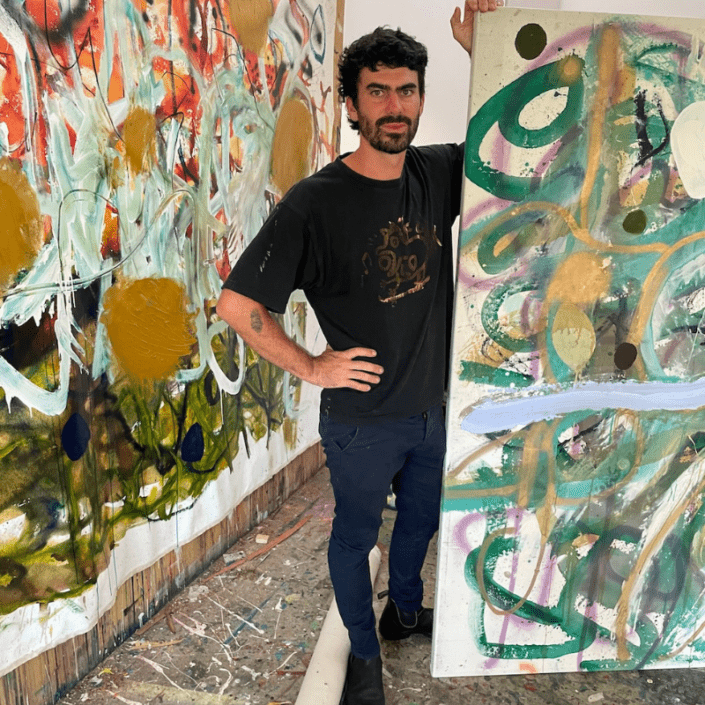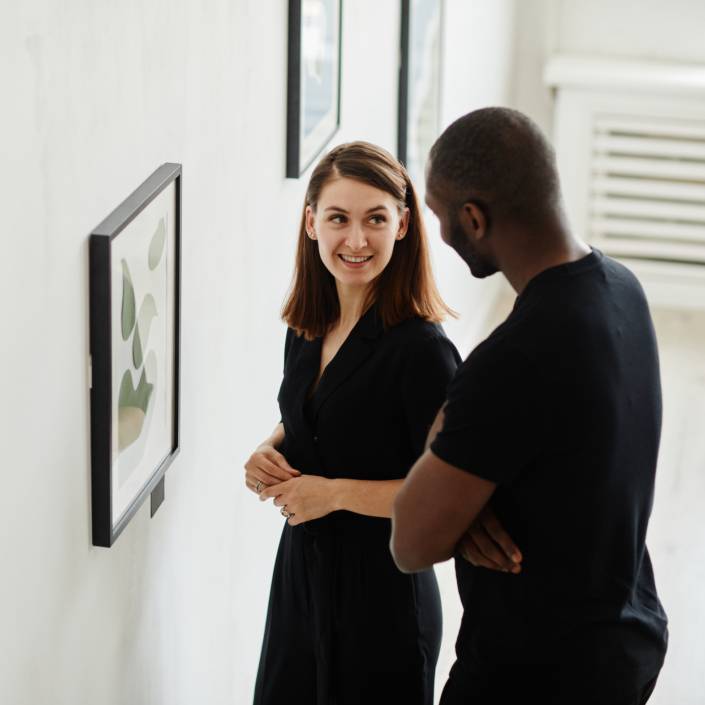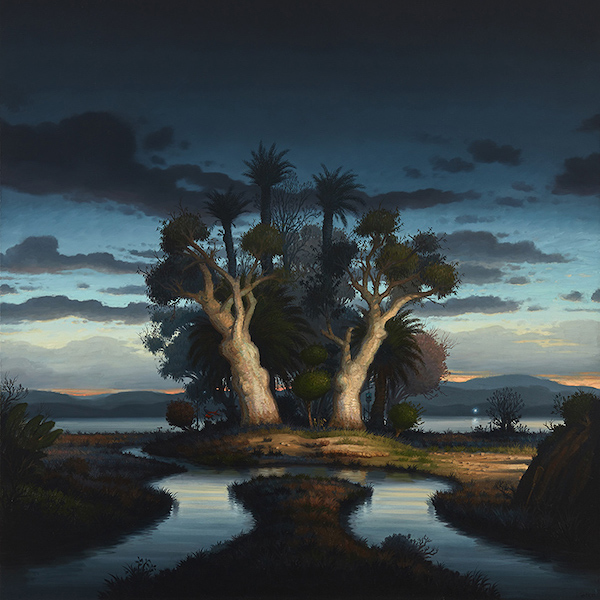Lifecycle of a Collector: For Love or Money, or Both?
Whatever their motivation, there’s no doubt artwork donations by artists and collectors benefit our public art institutions.
Words: Courtney Kidd
The ritual of art collecting is ancient while the donating of art works feels highly contemporary, perhaps that’s because donations are often accompanied by a wave of publicity or an exhibition evolving around the gift. But how do you choose who you donate to and when to donate, and what really are the mechanics of the process?
The answers to tax incentives can change in the flash of a financial year. For example, the Instant Artwork Write-Off introduced at the start of Covid-19 (now called Temporary Full Expensing) enabling small businesses to purchase art and deduct 100% of the amount against their tax return is likely to come to an end by 30 June 2022. But how does the landscape look for donations of individual art works or whole art collections?
“The tax benefits are that the person gifting the art gets a deduction equivalent to the market value of the art donated,” says Evan Lowenstein of Lowensteins, a company that has been providing advice to the creative sector for the past 50 years. “Prior to 1999 there was a disincentive to gifting art for the creators of it. Artists who donated works under the Cultural Gifts Program were deemed to have sold their artwork at the market value and had to pay capital gains tax. This tax was removed for artists as part of the Howard Government philanthropy program so after 1999 artists who created works were no longer hit with the tax on the value of their work.”
The current donation process that encourages gifts to Australian public collections is that the artist or collector approaches what is known as approved institutions, mainly public galleries, libraries, museums and sometimes hospitals and local councils. The Australian Government publishes a list of the places and approved valuers.
“Once the gift has been accepted,” says Lowenstein, “usually by a gallery, it arranges for the works to be approved by Commonwealth government approved valuers. Sometimes the donor has to pay for one valuation and the gallery, the other. This is usually negotiated between the donor and the institution. There are various declarations that are made that have to be filled in by the donor that do involve some complexities, so it is always good to seek professional advice when completing the certificate of donation.”
With the forms and valuations completed, the gallery submits paperwork to the Office for the Arts in Canberra where the gift is formally accepted by government and the deduction made.
That said, an acquisition from a donor needs to dovetail with a collecting plan or curatorial rationale, a view reiterated by Kent Buchanan of Western Plains Cultural Centre, Dubbo. “An institution has to have a reason to accept a donation. It has to make sense within the collection context and can’t be languishing in storage.” As curator of its collection of more than 400 animal themed works, Buchanan has in 2021 relished accepting photographic prints from bird portraitist Leila Jeffreys, an emu feather sculpture by Maria Fernanda Cardoso and kangaroo inspired explorations of colonisation by Joan Ross. The latter donation was initiated following the institution’s purchase of two works by that artist. Negotiations then ensued with gallerist Michael Reid and further works were then gifted under the Cultural Gifts Program. A similar process occurred with the donation of the Cardoso by collector Liz Morell who worked with gallerist Amanda Rowell to drive the process.
As Lowenstein notes, “The donation greatly benefits those with a higher taxable income, then they can access 45% deduction if they are on the top of the marginal tax rate for those earning more than $180,000. So, a gift of $10,000 can amount to a tax saving of $4,500 and as it is a noncash deduction it is a good outcome.”
Oftentimes the gifted artwork may initially be loaned to an institution as part of an exhibition, then ensues courting by the savvy curator to chaperone the loan’s status from that to gift.
Michael Fox is an arts accountant and art collector of over 20 years experience. He is also Director of Melbourne’s Fox Galleries. When asked whether donating is as charitable as it seems, his response is, “From a tax perspective, you collect art in one of three ways: private, investment or business. Private collection enables you to donate your artworks to museums and claim a cultural gift donation to the value of the artworks gifted. Because the gift is tax deductible at its market value, an opportunity exists to claim cultural gifts donation at more than what the collector originally paid for the artwork.
As an example, you could purchase a painting at $2,000 and five years later the gallery that sells that artist is regularly selling similar works for $10,000. If your marginal tax rate is 47%, the value of the tax concession of your cultural gift is $4,700. The collector would stand to make a profit of $2,700 on that cultural gift.”
Philanthropy, art world status or a tax break, the whys of donating are myriad.
Keen collector, corporate advisor and Art Collector board member Sue Cato has donated paintings from her collection but doesn’t do this for tax purposes and says that on each occasion the work was requested by the institution, “If they want the donation and it is the right thing for the artist and the right thing for the work that’s a terrific outcome.”
Some collectors, such as Gordon Elliott and Michael Eyes, who have amassed around 400 works, are also making donations that eschew any tax benefit, choosing Maitland Regional Art Gallery (MRAG) as the beneficiary for the Elliott Eyes Collection. “We decided to set up a foundation which will be administered by a gallery with the interest generated going to an artist for 12 months who creates a work which is donated to the gallery. We select 10 works from our collection which will be given to MRAG. The rest of the art, house and any other assets will be sold, and this will finance the fund which will then provide the grant to the artists the gallery selects. At the end of the 12 months the artist creates a work which is donated to Maitland and becomes part of the Elliott Eyes Collection.”
And there are monetary donations such as that by Rowena Danziger, former Chair of the Art Gallery of New South Wales (AGNSW) Foundation and her husband Ken Coles who donated funds for the purchase of a Jude Rae painting to the AGNSW and are delighted at the acquisition. “We thought Jude’s Interior 370 (Foyer 1), an architectural design of the ANZ tower in Sydney’s CBD, a magical and significant piece. The AGNSW didn’t have money for acquisitions and they wanted it, so we donated the money.”
“Some of the nation’s largest gifts have come from the heart,” says TarraWarra Museum of Art director Victoria Lynn. She is speaking of the impressive collection of more than 600 modern and contemporary Australian works that form the core of the institution located an hour out of Melbourne. “The gift of Eva Besen AO and Marc Besen AC represents a desire to share a collection, a passion and a set of ideas with the wider Australian community. It has given them immense joy to see others engage with, and learn from, the collection along with the many exhibitions that have been produced by the museum since it opened in 2003.”
Other significant gifts of this scale include that of the J.W. Power bequest which evolved into Sydney’s Museum of Contemporary Art, the John Kaldor donation to the AGNSW and the Bundanon Trust in NSW, gifted by Arthur and Yvonne Boyd. “Such gifts represent an enormous contribution to the culture, longevity and wellbeing of the nation,” says Lynn. “It is important to remember that gifting should never stop, as the arts can only thrive through the combination of private and public support.”
This article was originally published in Art Collector issue 97, July to September 2021.
Image courtesy: Unsplash.







